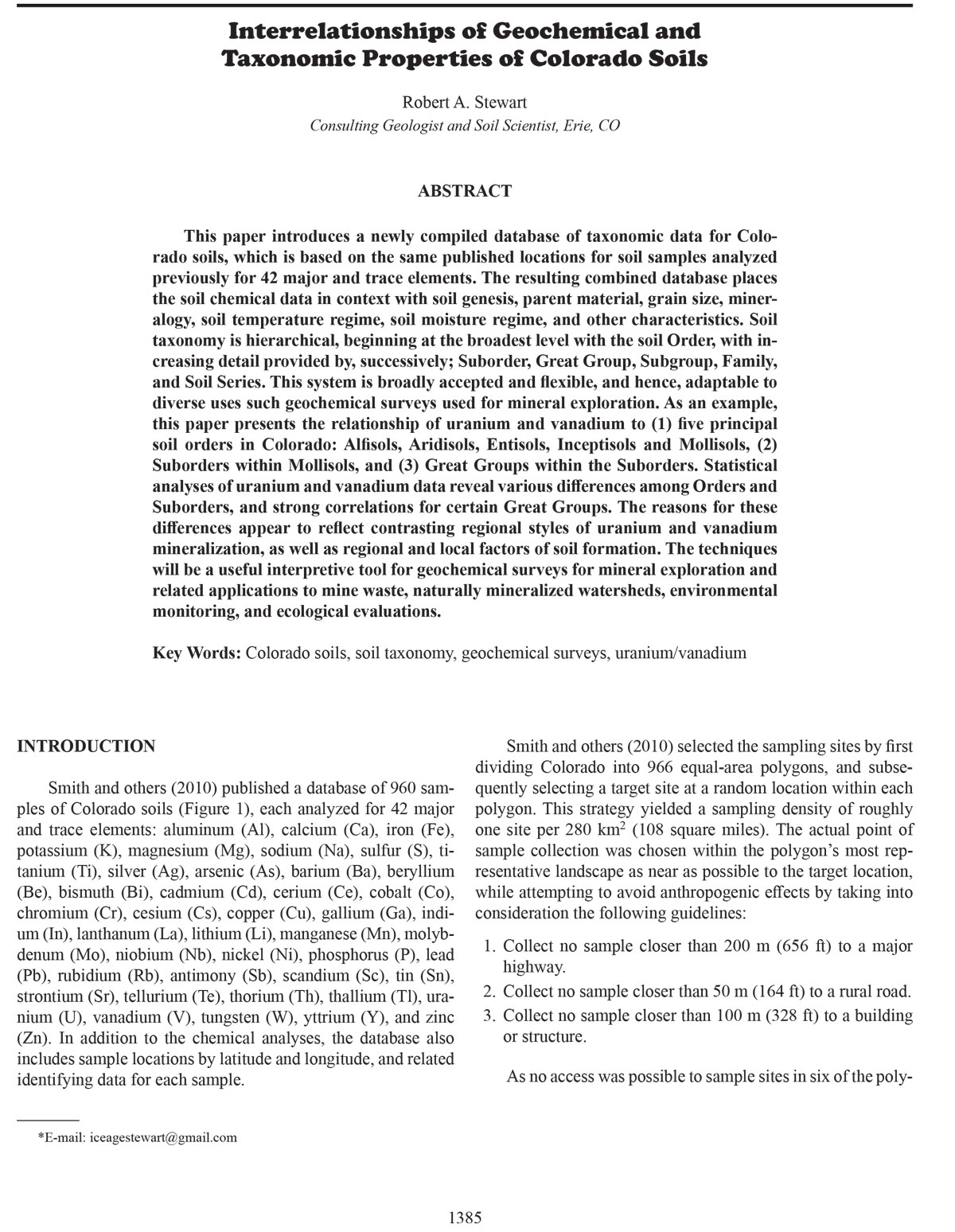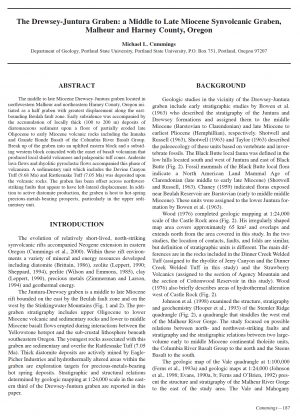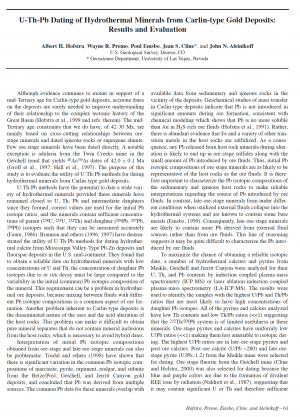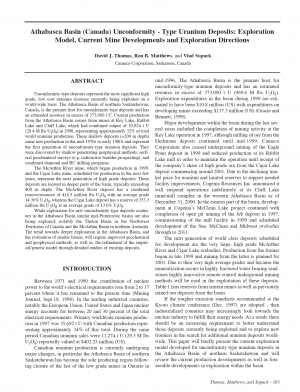Description
This paper introduces a newly compiled database of taxonomic data for Colorado soils, which is based on the same published locations for soil samples analyzed
previously for 42 major and trace elements. The resulting combined database places
the soil chemical data in context with soil genesis, parent material, grain size, mineralogy, soil temperature regime, soil moisture regime, and other characteristics. Soil
taxonomy is hierarchical, beginning at the broadest level with the soil Order, with increasing detail provided by, successively; Suborder, Great Group, Subgroup, Family,
and Soil Series. This system is broadly accepted and flexible, and hence, adaptable to
diverse uses such geochemical surveys used for mineral exploration. As an example,
this paper presents the relationship of uranium and vanadium to (1) five principal
soil orders in Colorado: Alfisols, Aridisols, Entisols, Inceptisols and Mollisols, (2)
Suborders within Mollisols, and (3) Great Groups within the Suborders. Statistical
analyses of uranium and vanadium data reveal various differences among Orders and
Suborders, and strong correlations for certain Great Groups. The reasons for these
differences appear to reflect contrasting regional styles of uranium and vanadium
mineralization, as well as regional and local factors of soil formation. The techniques
will be a useful interpretive tool for geochemical surveys for mineral exploration and
related applications to mine waste, naturally mineralized watersheds, environmental
monitoring, and ecological evaluations.





